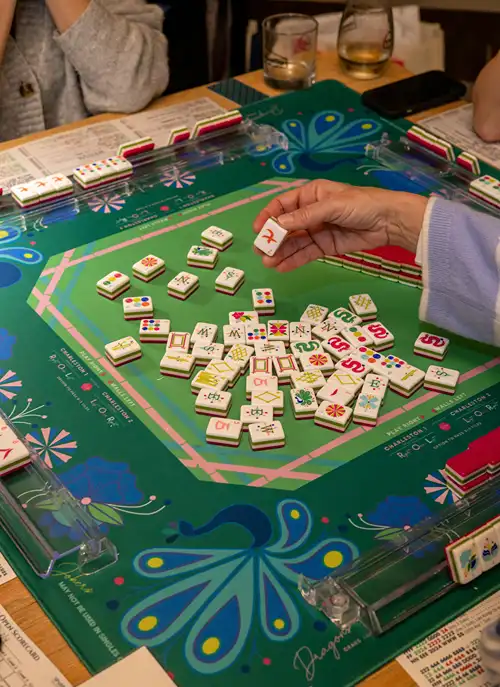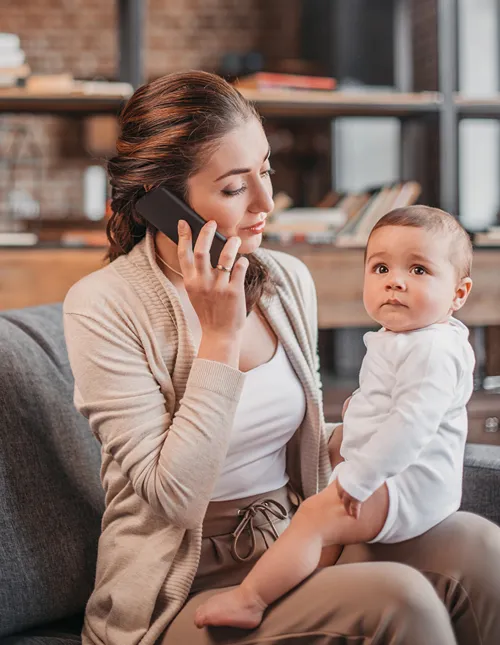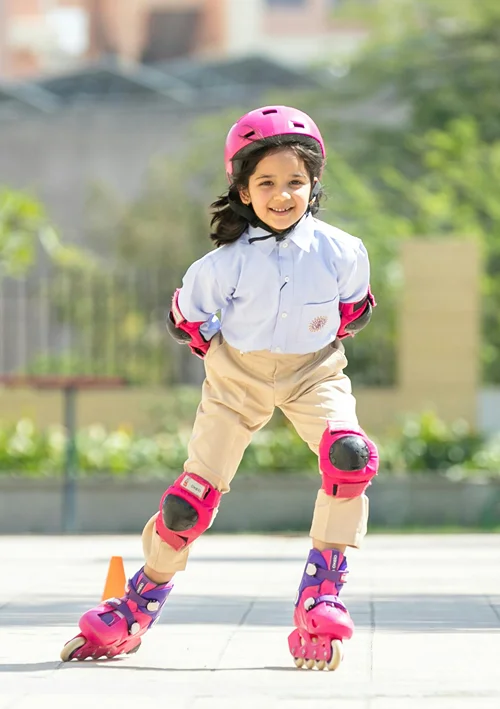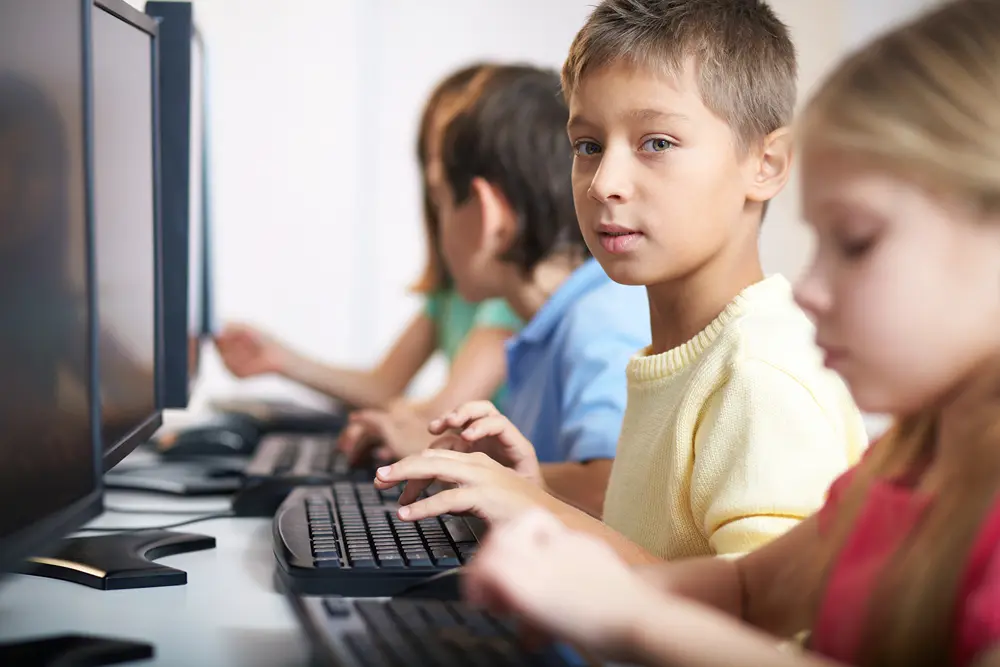Emergencies test both your cash flow and preparedness. A short, written plan can keep them steady. For single parents, this confidence is crucial, as their income is heavily affected by unplanned costs.
Below, we provide several practical tips for emergency planning for people who raise their children alone and consider reliable options for financial assistance when savings fall short.
How to Plan for Emergencies Smart as a Single Parent
We know how hard it can be to budget when you raise a child alone, and money is tight. Below are some practical steps you can take to reach financial stability.
Build a Budget That Protects Essentials
Start by listing every bill. Highlight those that maintain household stability: rent, electricity, heating, phone, and internet for school, transportation, and childcare. These are the essentials during any crisis. Separate fixed and variable costs so you can reduce non-essential expenses quickly, like streaming services and subscriptions.
Contact bill providers in advance to request a shift in billing cycles. This can help avoid overdrafts and late fees. If your payday doesn’t line up with major bills, consider dividing payments into two parts matched to each deposit. Maintain a small buffer in your checking account to avoid overdrawing. If funds get tight, inform your landlord and utility companies before payments are due. Early communication can sometimes help you get alternative payment arrangements without involving penalty fees.
Create an Emergency Fund
Start with a small, attainable savings goal. Set up automatic transfers of $10 to $25 on each payday. By doing this, you will move money to savings before it’s spent. Sell unused items like strollers, furniture, or seasonal gear and deposit the funds into a high-yield account. Use budgeting apps, such as round-ups and cash-back tools, to make saving easier.
Anticipate predictable expenses (school supplies, car registration, medical co-pays) and treat them as a “sinking fund” with a dedicated monthly budget line. Keep the emergency savings easy to access, but not so visible that it becomes tempting to use them every day. The first $300 saved may feel slow, but building habits makes the next $700 easier. Even modest savings help prevent costly borrowing in emergencies.
Protect Cash Flow Before A Crisis Hits
Insurance helps keep unexpected events from turning into financial disasters. Check the limits of your renter’s insurance and your deductible. For auto insurance, understand out-of-pocket costs and how long repairs might take, since time matters as much as money for a busy household. Refill prescriptions a few days before they run out to dodge high-priced, last-minute buys. Prepare a document kit that includes identification, insurance details, pay stubs, account numbers, childcare contacts, and a short list of emergency contacts. Store digital copies securely so you can access them when applying for financial aid or adjusting payment plans.
Keep Your Emergency Plan Updated
A plan needs to match your daily life. Review it each season, just as you update children’s clothes or test smoke alarms. As kids grow older, expenses for new classes, changing childcare, and healthcare needs may arise. Revise your budget and cash flow to ensure they fit the current household situation. Update priorities and restart your emergency fund if your income changes. Stability comes from regular, repeated actions.
Keep one notebook or digital folder for all plan updates. Record progress, like paying off a bill early or growing a savings cushion. These small victories can boost your motivation. If the plan derails in one month, revise and adjust it instead of starting over entirely. For example, automate transfers right after payday, or try grocery pickup to reduce spending.
Build Community As a Safety Net
Facing a crisis alone is daunting, so connect with support systems around you. Trade babysitting shifts with coworkers, share rides with school parents, or swap meals with neighbors. Join local message boards for resources like grants for single parents, food drives, and job leads. Save helpful links alongside your list of assistance programs so you can find support quickly if finances tighten.
Treat your emergency plan as a map with multiple routes. If your car breaks down, consider using savings, a community grant, or a charity repair program. Each solution comes with its own costs and timelines. Having options in advance helps with calm decision-making.
Teach Your Kids Stability Through Routine
Children don’t need a detailed budget, but routines matter. Demonstrate control by setting grocery limits, pausing before big purchases, or discussing prices. Let them add spare change to the emergency jar or help plan next month’s school expenses. Involvement encourages teamwork and gives them budgeting skills they’ll use in the future.
Create rituals that signal security, such as weekly meal planning, Sunday laundry, or nightly check-ins. Such routines maintain family stability when life feels chaotic. Planning sets a reassuring tone for the household.
Re-Check Regulations and Fine Print Every Year
Rules about loans and local aid often change. Mark one date each year to confirm which programs are active and update your contact lists. If you’ve used a loan before, check your credit profile for any improvements. Keep track of your bills, since on-time payments can increase your score, which brings better terms. Ensure insurance, beneficiaries, and contacts remain current. Even one outdated phone number can delay help. A focused review takes about fifteen minutes twice a year, but keeps your financial safety net strong.
Playbooks For Common Unplanned Expenses
Clear decision-making improves when you have written instructions. Create checklists for common problems and keep them accessible.
Lost Hours Or Income
Prioritize essentials like rent, childcare, and utilities. Pause non-critical expenses for two billing cycles. Email your landlord immediately to arrange a payment plan linked to future deposits. Ask service providers about hardship programs to maintain phone and internet access. If the gap is short, list local grants and aid options so you can apply quickly.
Car Repair
Request written quotes from at least two shops and verify their warranties. Review roadside assistance benefits. Those tied to your insurance or credit card are typically less expensive. List alternative transportation options to ensure childcare and routines continue. When considering loans or payment plans, calculate the full repayment amount instead of just the weekly payments to ensure you clearly understand the terms and costs.
Medical Bill Or Copay
Ask for an itemized bill and compare codes with your insurer’s breakdown. Mistakes can happen. Contact your provider’s billing office and ask about no-interest payment plans. Many clinics now allow modest monthly installments if you reach out early. If eligible, apply for charity care or income-based discounts. Prepare a script for phone calls so you know what to say: for example, “I can pay $40 on the 15th each month. Can we set that up?”
Childcare Gap
Identify two backup caregivers and a neighbor who can help temporarily. Inquire at your child’s school about emergency or sliding-scale aftercare programs. Keep key childcare subsidy contacts saved in your phone, as spaces can appear and disappear quickly. Pack a standby kit with snacks, medicines, and activities to smooth transitions when plans change.
Reliable Help When Money Runs Out
Sometimes, even careful planning can’t cover every expense. Situations like a child’s illness, vehicle breakdown, or rent increases can stretch budgets thin. When savings and extra income aren’t enough, look for trusted assistance that won’t lead to bigger debt.
Start with local aid programs focused on housing, utilities, or childcare. County offices, food pantries, and neighborhood nonprofits usually respond quickly to families. Search city and state benefit portals. Many of them allow for single applications that check multiple programs at once. When considering any loan solution, read the details: check fees, repayment terms, and eligibility. Read more in this guide to learn where to turn when urgent expenses strike.
Cautious borrowing may be needed at times. Use loans only when absolutely necessary, calculating the complete repayment, not just the short-term amount. Set reminders for due dates and check with your bank about automatic withdrawals to avoid overdrafts. Done responsibly, borrowing should resolve the problem, not cause new ones.
Emotional Readiness And Crisis Communication
Money stress is heavier when parenting alone, but sharing it can reduce anxiety. List the people you’ll call in an emergency: employer, landlord, school contacts, and a trusted friend. Practice these conversations during calm moments to improve your confidence. Sort urgent bills into three categories: must-pay-now, can-wait-a-week, and can-delay-a-month. This will help you clarify priorities and quiet mental stress.
Talk to your kids in simple, honest terms: for example, “We’re saving for a few weeks so that we can fix the car.” This invites teamwork rather than fear, and emotional recovery helps restore financial stability.
A 30-Day Action Plan You Can Actually Stick To
Consistency is more effective than big changes. Steady efforts over one month build strong habits.
- Week 1: Track every expense and label each as essential or non-essential. Adjust subscriptions and meal plans to save $20-$40.
- Week 2: Open a dedicated savings account. Set up automatic transfers twice weekly.
- Week 3: Gather important documents, such as pay stubs, IDs, lease, and childcare info. Scan and save digital copies. Apply for two aid programs that fit your needs.
- Week 4: Test your emergency plan. Simulate a missed income day and note weaknesses and update the plan right away.
By month’s end, you’ll understand your spending patterns, where savings can be slow, and which support sources respond quickly.
Final Thoughts
Preparedness means knowing what resources you have, who to contact, and how your budget will cover immediate needs. Focus first on essentials like housing, utilities, groceries, and childcare. Build a starter emergency fund, keep an updated list of assistance programs, and use local grants if income drops. If borrowing becomes necessary, carefully review loan terms, fees, and charges. Responsible planning and clear awareness of options provide the best foundation for your household’s stability.
Related Resource:
Nine tips for navigating higher studies as a single mom.









